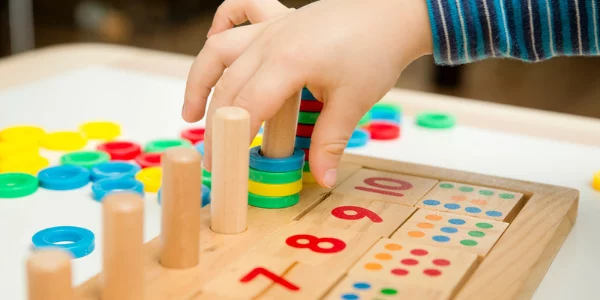Applying Early Math Skills To Everyday Life

Learning Math is fun. Math is every day around us: the colourful clothes we wear, the amount of food we eat, sq.ft of place we stay in, the pattern we talk in. Imagine Math as a language and not as something to be fearful of. Research has shown that some children start developing a fear for Math sometime during their secondary grades. This is when concepts start to become complex and more abstract. And when this happens, students tend to avoid spending time with Math and the concepts seem to feel more daunting than they actually are.
If we look closely, the concepts in Math just like other subjects are interconnected and understanding of one leads to the understanding of the other. They’re built on top of one another and therefore the problem is not recognized immediately. The child may pass a grade without understanding a few concepts without realizing that he/she is finding it difficult to cope or requires scaffolding. It is evident later and sometimes it gets too late to go back to the basics. Sometimes even teachers do not have the time to go through it. The curriculum is vast and catering to students of varied needs can get difficult to handle at times. So what can be done?
Educators and parents can support the children by doing small interventions as follows:
Connect Math concepts to everyday things
Patterns, colours, shapes are all around us. Notice and talk about patterns such as the way leaves grow on a tree, birds fly home in the evening, the way necklaces and bangles are worn. Talk about fractions taking the example of the sleeves of varying lengths we wear every day, kilograms of food we buy from the grocer and fill our plates with. Think of all steps in sequence from growing the food to bringing it to our table, or making a pizza, baking bread, etc. Help them associate quantity with number using everyday objects like bangles, beads, coins, etc. Practice cutting skills by using child friendly scissors to cut play-dough (can be made using atta + water) and cutting through newspapers. Talk about volume while going for a bath or while filling utensils with varying amounts of liquid. Involve children in household tasks like washing and folding clothes, and talk about the number of clothes being worked upon. While cleaning or washing utensils, discuss the proportion of liquid used with the example of water used. Likewise, while mopping the floor you can talk about spatial reasoning and how to orient our bodies in relation to the area we want to cover. Let them create wicks for Diya and vary the amount of pressure and twisting required to make it.
Get involved and communicate
Talk to your child about what was covered in school. Talk to the teacher and staff as well as other students from school about what is getting covered and about how they are teaching Math concepts. Observe the child while he/she is doing homework or performing actions that revolve around Math. Ask the child to do tasks at home independently and notice how they accomplish them; scaffold them when required.
Encourage and develop a love for Math
Plan for simple games that revolve around basic math skills. For example, Puzzles, Snakes and Ladder, Dominoes, Treasure hunt, Riddles, Quiz, etc. Notice and enjoy aspects of Math that are everywhere around us, reassuring the child that there is nothing to be afraid of.
Expect growth and not perfection
Don’t fall for some children who can do it right always and wonder why your child can’t be the same. Each child has their own learning curve. So let them blossom at their own time and pace. Look for the growth in your child over time and take small steps that are easier and measurable. The child need not be perfect. Remember that a perfectionist is once a beginner.
Math is not just about numbers, addition, and subtraction which is what people rush to teach children. Math is a way of life; it includes logic, spatial reasoning, problem-solving, critical thinking, inductive and deductive reasoning, and lots more that is used in our everyday lives.
Roger Antonsen says Math is the hidden secret to understanding the world. Know more by watching the following video:
At various grade levels of a LEAD powered school, Math is taught using the Concrete – Pictorial – Abstract approach.Know More

